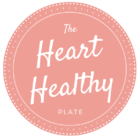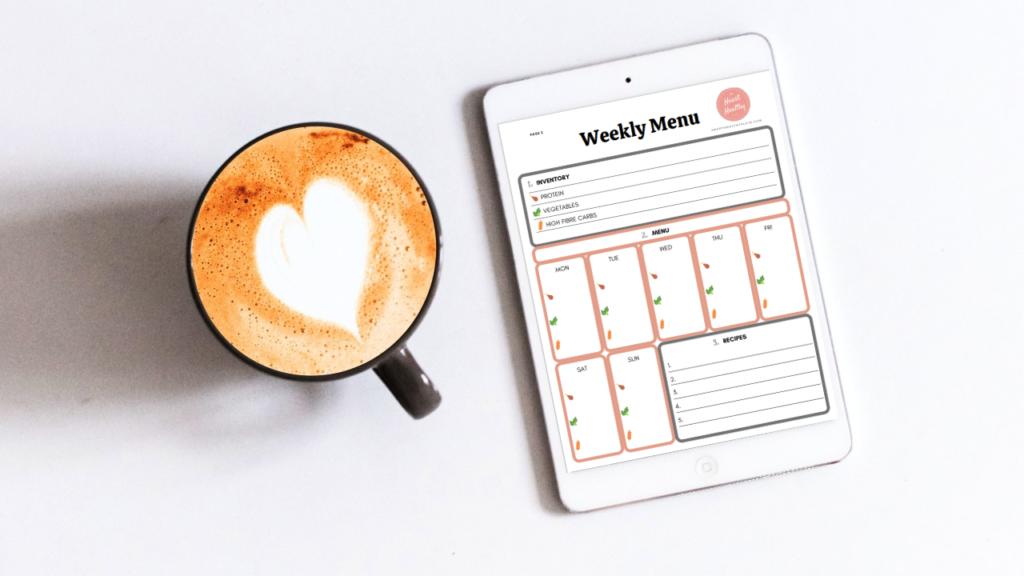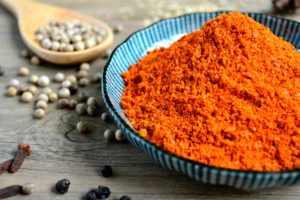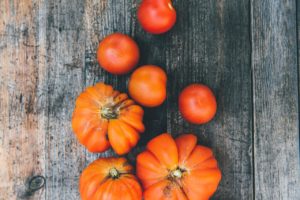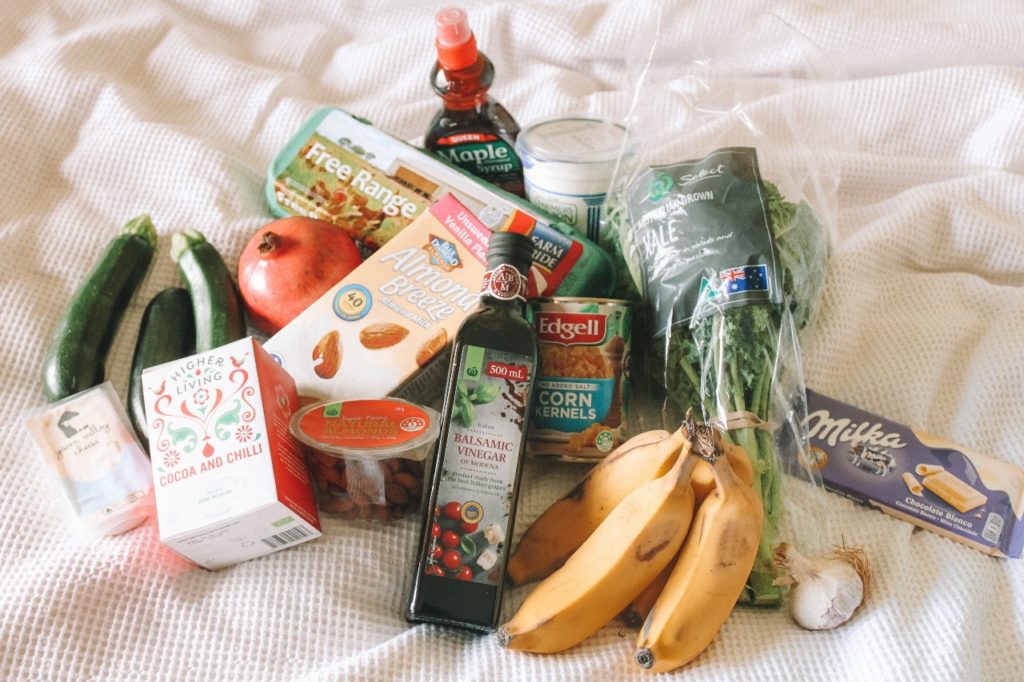

By Samantha Chabior, RD
As a Registered Dietitian I’m often telling clients to cook more often at home using whole, unprocessed foods. But what if you hate cooking? Or what if you’re in a time crunch and want to make something a little healthier but still save time using pre-made ingredients?
This article is for those of you who don’t feel confident in the kitchen, want ideas on how to make healthier meals using frozen or canned ingredients, and want easy time-saving meal ideas using either no-cook or minimal food prep methods.
There’s no doubt that processed foods tend to be higher in sodium, saturated fat and added sugars than whole foods prepared from scratch. These are nutrients we should limit in our diet because of their negative impact on our heart health. However, there are plenty of ways to boost the nutritional value of processed foods either by adding in minimally processed ingredients, or by choosing processed foods that have minimal amounts of added salt, sugar or saturated fats.
Here are my top 10 favourite ways to use pre-made foods to make easy and nutritious meals!
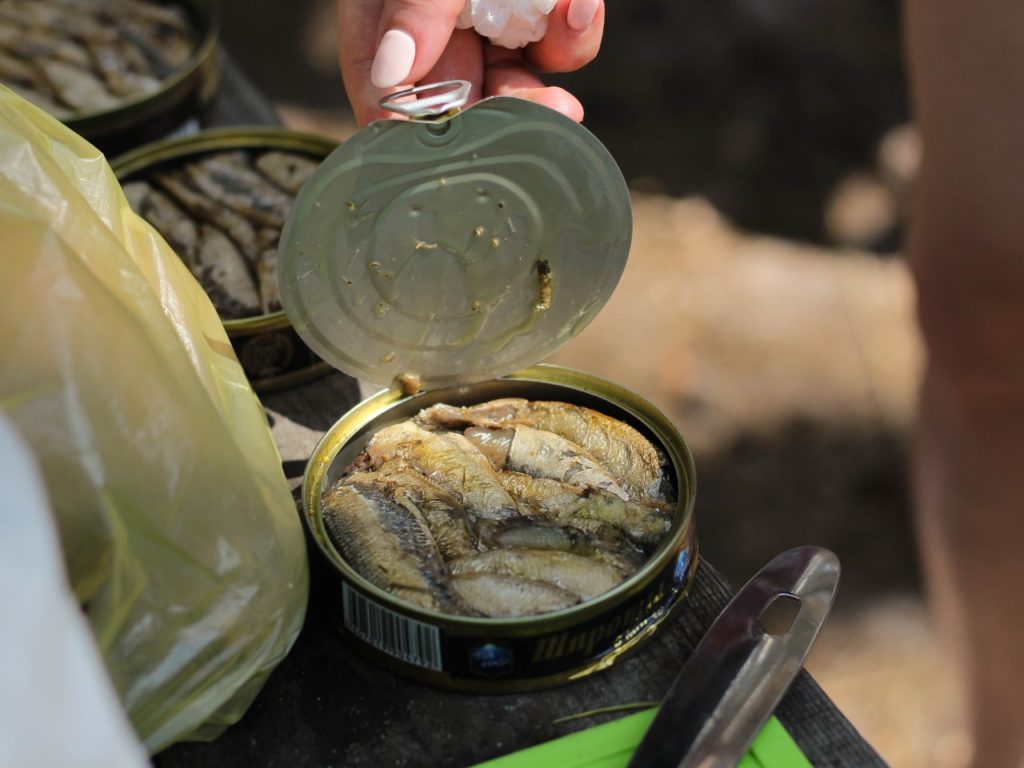
1. Canned fish
Canned tuna and salmon can be an affordable and easy way to get more fish into your diet. Look for fish that is labeled “low sodium” and is canned in water instead of oils.
Lemon-Dill Tuna Salad
Mix a can of tuna in a bowl with lemon, chopped fresh dill, fresh ground pepper, olive oil, chopped red bell pepper. Serve on a romaine lettuce wrap or whole grain bread.
Garlic Salmon Pasta
Sauté garlic in olive oil, add one can of salmon and heat through. Toss with whole wheat penne pasta and drizzle additional olive oil if needed. Top with freshly ground pepper.
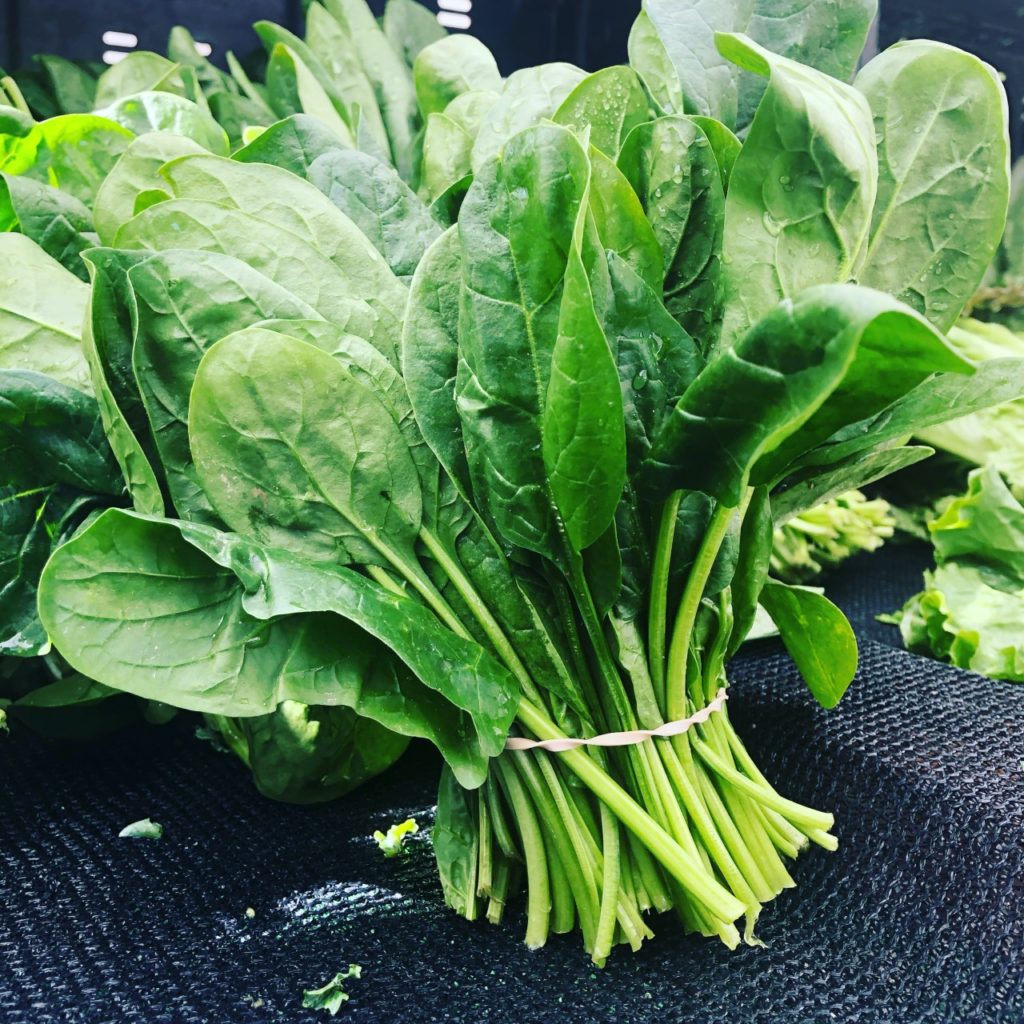
2. Pre-washed salads & leafy greens
This is one of my favourite time saving hacks to get more veggies into your diet!
Buying bagged salads and pre-washed greens is definitely more expensive than buying a bundle of spinach and washing it yourself, but it can be an incredible time saver during meal time.
I recommend avoiding the bagged salads that come with croutons, bacon bits, and cheese as these tend to be high in sodium and saturated fat which can raise blood pressure and cholesterol levels. I also recommend to skip the salad dressings, or replace the dressing with a homemade mix of oil and vinegar.
A great way to use up extra greens is to toss handfuls of pre-washed spinach into your morning smoothie, omelette, pasta sauce or soup. It takes zero effort and time, but it will add a great boost of heart healthy nutrients to your meal.
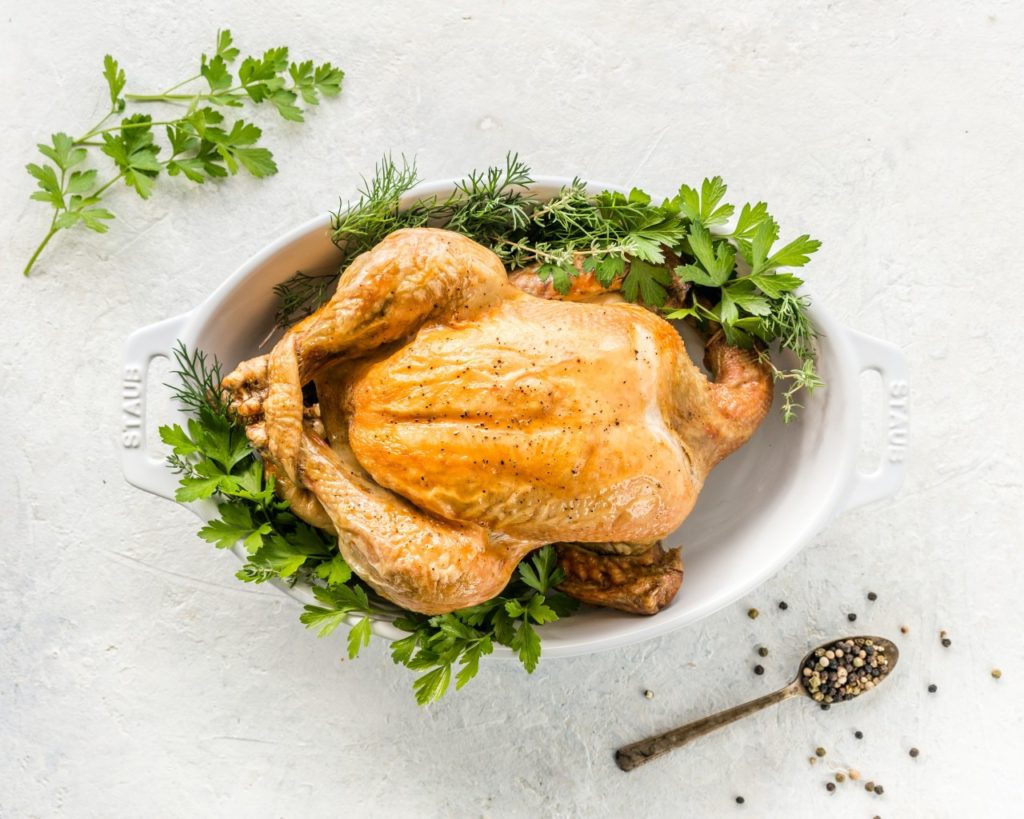
3. Rotisserie chicken
Store bought rotisserie chicken tends to be quite high in sodium, but it can be a serious time saver for a quick dinner! Removing the chicken skin will help reduce some of the saturated fat and sodium.
To help keep the overall sodium content of the meal lower, try pairing the chicken with a salad (such as a bagged salad from tip #2!) with homemade dressing or steamed veggies, and avoid adding salt or sauce to your grain or starch.
I love to pair the chicken with a microwaved sweet potato with some garlic powder, pepper and a drizzle of olive oil, and a simple green spinach salad. You can use up leftover chicken in a chicken soup, pasta, or wrap for a super easy lunch.
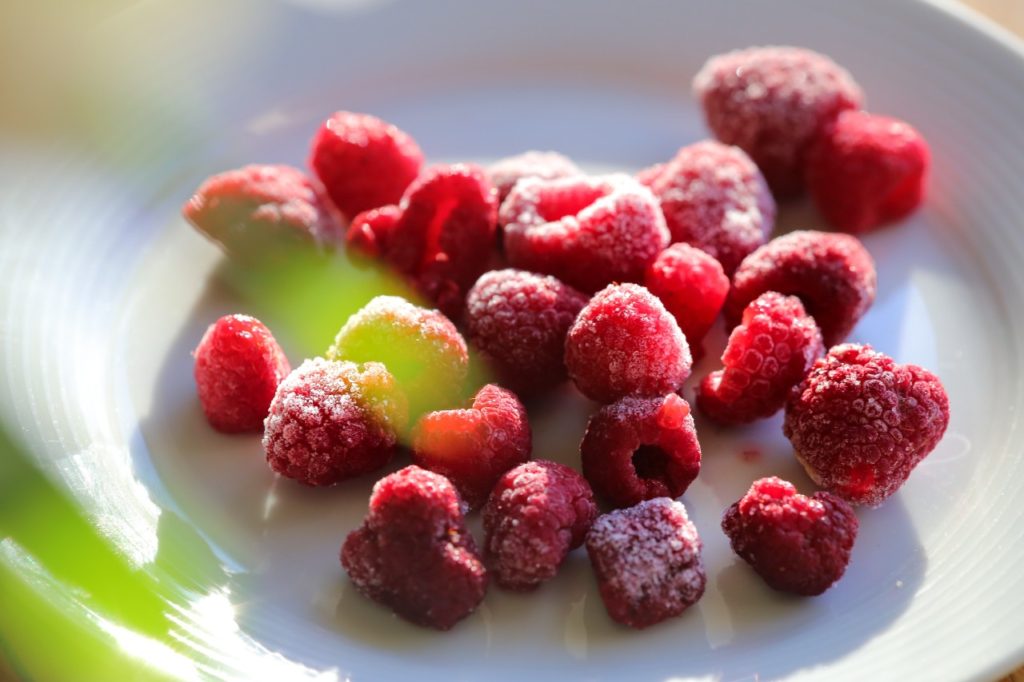
4. Frozen vegetables & Fruits
Another great time saver is frozen produce. Did you know frozen vegetables and fruits are just as nutritious as fresh, but they take a fraction of the time to prepare because the prep work of washing, peeling, and chopping is already done!
Look for frozen veggies that are plain, meaning they don’t contain any added sauces or seasonings which can rack up the sodium.
You can prepare most frozen veggies simply by microwaving them, but my favourite option is to steam them, or toss them into a chili or stir-fry as a super easy way to boost the vegetables at dinner. They’re also a great option for people living alone who find they simply can’t go through all of their fresh produce before it goes bad! They can sit in the freezer for months and you simply pull them out when you need them.
For your frozen fruit you can either let it thaw in the fridge for a few hours before serving, or defrost them in the microwave. Or if you’re using them in cooking you can just toss them into the pot straight from the freezer!
Frozen fruit is a perfect addition to cooked oatmeal, smoothies, and can be used as a topping for salads and cereals. Some fruits soften up quite a it once they are defrosted (such as blueberries), so these fruits would be best served either cooked or blended in a smoothie rather than as a garnish. They can also be pureed to make a wonderfully sweet dressing or sauce!
Fruits with a lower moisture content like mango, peaches and pineapple will retain their firmness once defrosted and would be similar in texture to canned peaches. Because they hold their firmness pretty well, these fruits would be better suited to use as a garnish in a fresh salad or eaten raw without needing to blend or cook them.
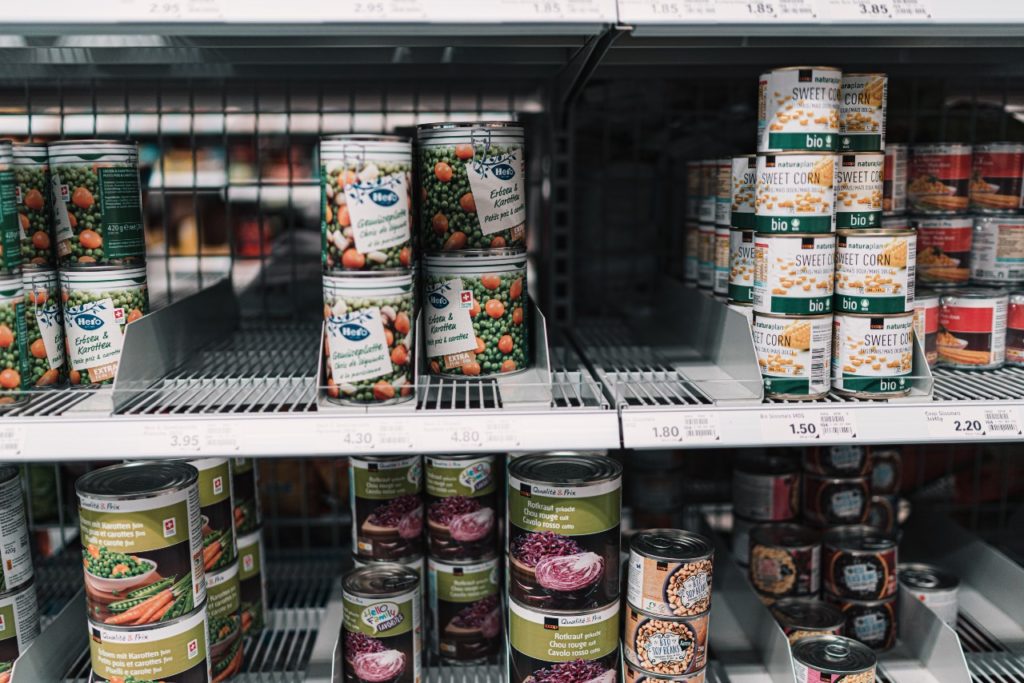
5. Canned legumes (beans, chickpeas, lentils)
Are you intimidated by cooking dried beans, chickpeas or lentils? Canned legumes are a great time saver and they are super simple to use in meals because they’re already pre-cooked and don’t require any heating before you eat them.
You can literally eat them straight from the can! Simply toss the legumes into a colander and drain the liquid. Then run them under cold running water for a few seconds and your beans are ready to use! They’re perfect in a mixed bean salad, chili, or soup!
Try one of these recipes to boost the legumes in your diet:
- Super Meaty Vegetarian Chili With Ground Tofu Recipe (Meat Lover Approved!)
- Simple Mediterranean Mixed Bean Soup With Kale Recipe
Be sure to look for canned legumes that are labeled “No Salt Added” because they will be low in sodium, and avoid using canned beans in sauces such as baked beans since they will be high in sugar, saturated fat, and sodium.
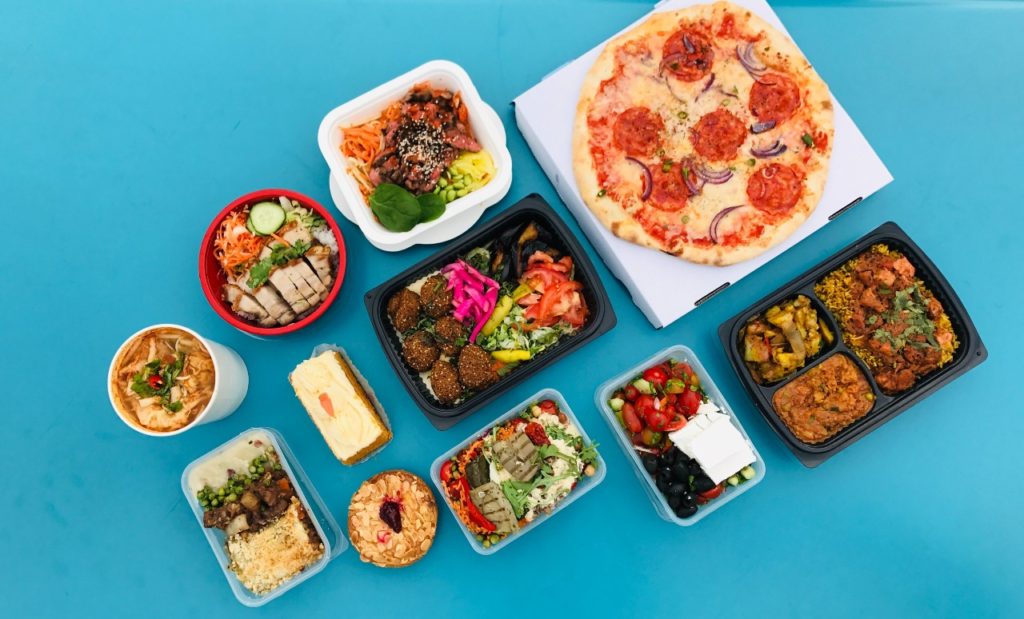
6. Frozen dinners & pizzas
Frozen meals have a long history of being categorized as “unhealthy” because they are high in sodium, saturated fat and sugar, but many companies have started to make more nutritious versions of frozen meals.
Although I still recommend limiting how often you have these products (since often just one meal can contain a full day’s worth of sodium!), many people rely on frozen meals for a quick dinner. So I do feel it’s worth providing some ideas on how to make these foods more heart healthy.
I recommend trying to pair the frozen meals with a low sodium, minimally processed food to bulk up the nutritional value and choose products with 15% or less of the daily value for sodium and saturated fat.
Frozen Pizzas:
Add extra sliced mushrooms, red peppers, arugula or spinach as toppings to the pizza and pair with a side salad. Limit to one or two slices and fill half your plate with salad for a complete meal.
Frozen Dinner Meals:
Try to look for frozen meal options with lower amounts of sodium, saturated fat and sugar. Products without sauces and those made with whole grains and lean proteins like chicken breast or turkey tend to be better choices. Most of these meals are still pretty light on the veggies which can leave you feeling hungry within a couple hours of eating, so mixing in an extra serving of plain frozen vegetables, or pairing with a whole grain such as quinoa or barley, is a great way to boost the overall fibre content of the meal.
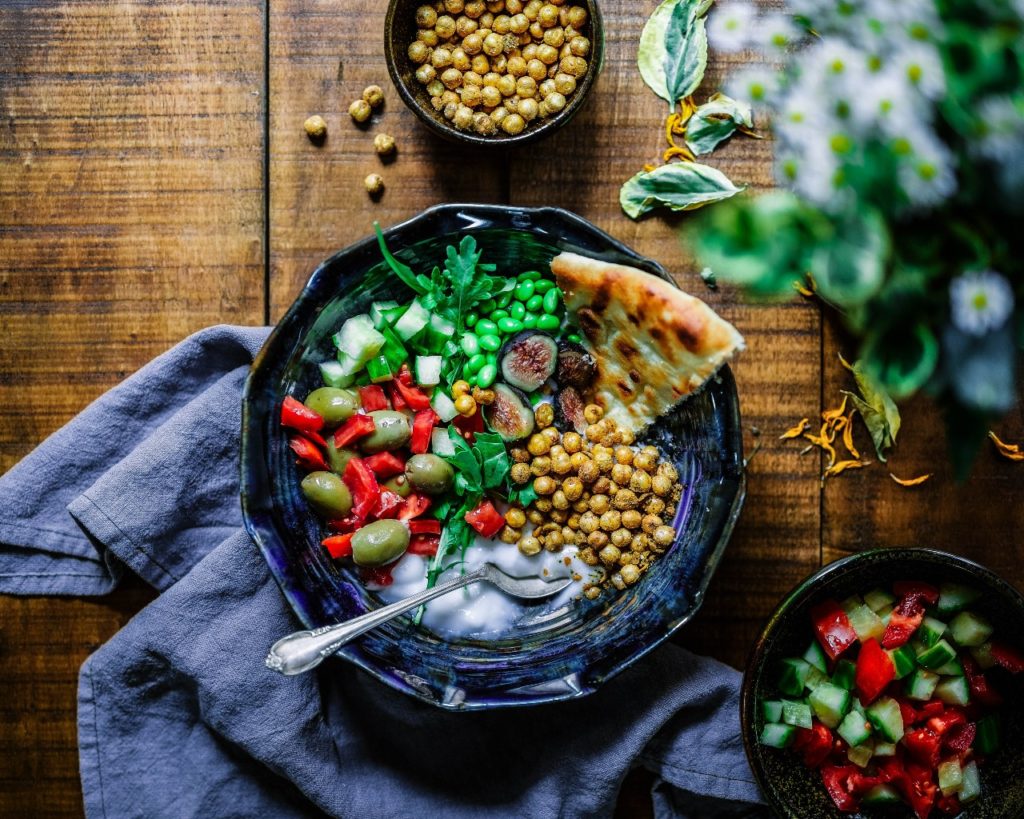

When choosing frozen, pre-made meals that are higher in salt and saturated fat I recommend trying to limit the portion of the processed food at the meal, and bulk up on the minimally processed sides.
For example, instead of having a whole frozen pizza, try having only one or two slices and fill half your plate with a fresh salad and no salt added homemade salad dressing. Using this strategy is a great way for all foods to be able to fit on a heart healthy diet!

7. Quick cooking oats
Steel cut oats and large flake oats tend to be less processed than instant or quick cooking oats, which means they retain more of their nutritional benefits. However, plain quick cooking oats can still be an excellent breakfast choice since they have no added sugars and are a great source of cholesterol-lowering soluble fibre.
You can also find quick cooking steel cut oats that are ready in just a few minutes, which saves a good chunk of cooking time during those rushed mornings!
A great time-saving method to prepare oats is to make overnight oats by soaking the oats in your favourite plant or dairy milk overnight in the fridge – no cooking required! Throw in some frozen fruit for a boost of sweetness and you’ve got yourself the perfect grab and go breakfast!
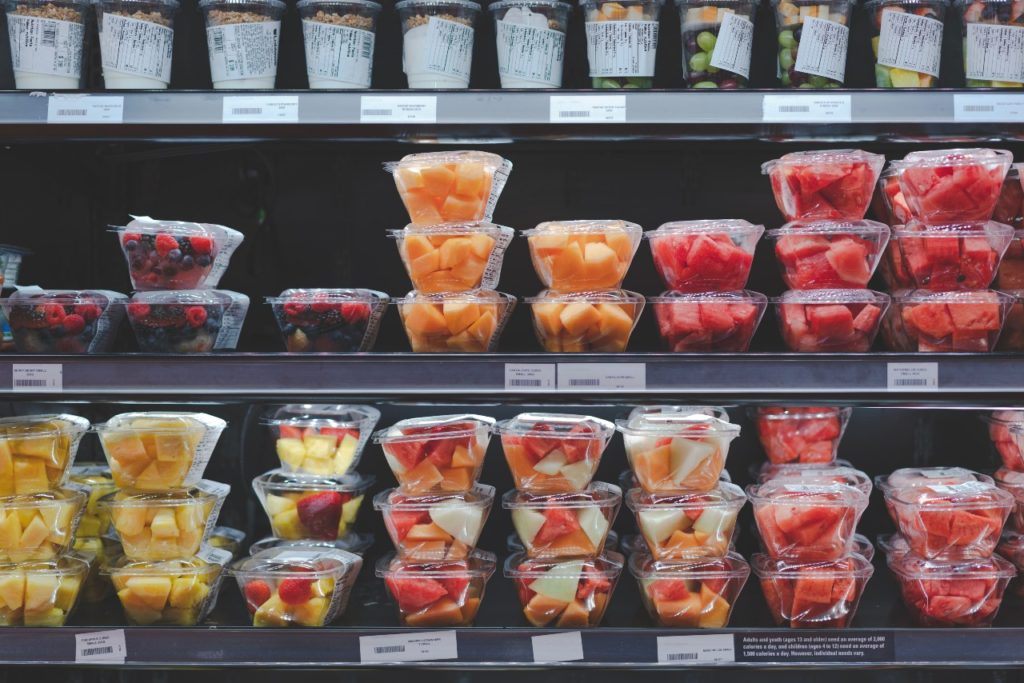
8. Fruit & veggie trays
Struggling to get fruit and veggies in your diet because of the extra time it takes to wash and chop them?
Try this super simple time-saving hack! Buy the pre-washed and chopped veggie and fruit trays (you know the ones that you’d normally bring to a potluck or serve at a party), and voila! You have fruit and veggies conveniently ready to go without needing to do any of the annoying prep work.
Throw the fruit into smoothies, salads, and morning oats, while the vegetables can be tossed into soups, stir-frys, pasta sauces, or steamed as a quick veggie side dish. Or simply keep them in the fridge and eat them raw for a quick and healthy grab and go snack for work!
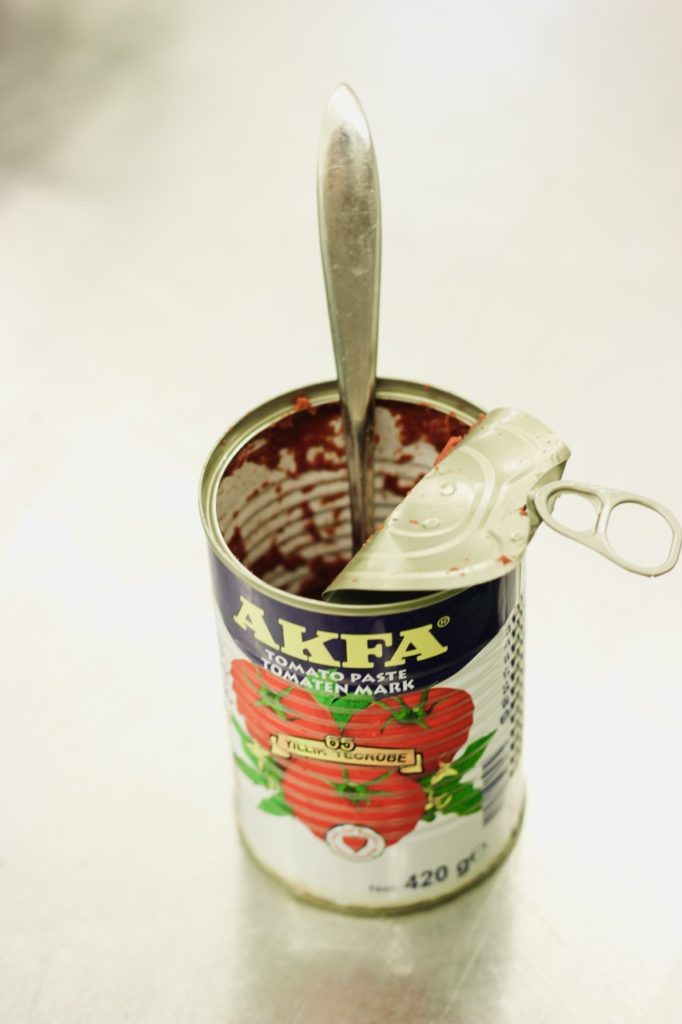
9. Canned tomato products
Whip up a super quick, low sodium pasta sauce, curry, or chili using no salt added canned tomato sauce and spices.
Many canned pasta sauces have high amounts of added salt and sugar, but you can buy a variety of tomato products such as tomato sauces, diced tomatoes and crushed tomatoes which only contain tomatoes!
Look for the words “No Salt Added” on the front of the label and double check the ingredients list to make sure tomatoes are the only ingredient. You can then quickly whip up a sauce by sautéing garlic, onion, and adding some fresh and dried herbs like basil, oregano, and thyme. This is much faster than making a tomato sauce from scratch, but you still have control over what goes into the sauce and can limit the added salt.
Save leftover canned tomato paste using this food hack:
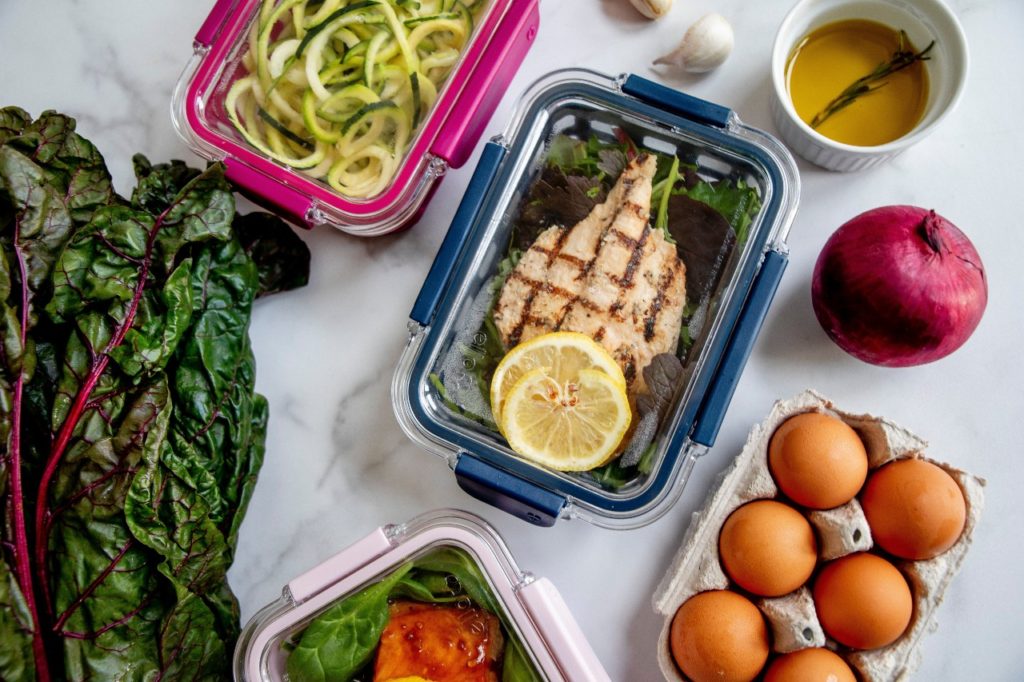
10. Repurpose Homemade Leftovers
I’ve saved my absolute favourite tip for last!
What better way to save time than to use up those leftovers you already have hanging around from yesterday’s dinner? It cuts down on food waste and gives you a boost of variety, especially if you’re sick of the same old leftovers.
Here are some ideas of how you can quickly repurpose various parts of your leftovers into a delicious new meal. Whether you have just one or two components that you need to use up, there are so many ways you can reinvent them into a new meal.
Leftover pork chops or pork tenderloin? Turn it into a stir-fry! Chop the pork into small pieces. Stir-fry a bag of frozen veggies and toss in the cooked pork pieces to heat up near the end with some ginger and garlic for a completely new meal.
Leftover baked chicken breasts? Turn them into a pasta! Chop the chicken breast into small pieces, toss with your favourite pasta sauce, and pair with a green salad for a balanced meal.
Leftover cooked barley, brown rice or quinoa? Turn it into stuffed peppers! Combine the leftover cooked grains with a can of black beans and your favourite seasonings to make the filling. Slice red peppers in half and stuff with the filling, sprinkle low fat mozzarella cheese over the top. Roast peppers in the oven until cooked.
Leftover steamed green beans, broccoli, or cauliflower? Turn them into a soup! Prepare your soup base using your favourite soup recipe. Combine low sodium or no salt added broth with your seasonings and any other ingredients needed for the soup. Toss in the steamed veggies near the end for a veggie boost to your meal!
Want to get started with meal planning, but don’t know where to begin?
Let me know in the comments your favourite ways to make heart healthy meals using pre-made ingredients!
